Throughout automotive history, numerous vehicles have introduced groundbreaking technologies and designs that, at their inception, went largely unnoticed. These unsung innovations have since become integral to modern automotive engineering, shaping the way we drive today. From pioneering safety features to revolutionary manufacturing processes, these cars laid the foundation for advancements that have become industry standards. In this article, we explore 15 such vehicles that, despite their initial underappreciation, have left an indelible mark on the automotive world.
What is the best car of the past half-century? Some Corvette? Prius? Certainly, it will be something that has created reverberations throughout the industry. According to Best Cars of the Year—The New Car World Championships, it’s the Volkswagen Polo.
Polo?! Double-you-tee-eff?
Suspend disbelief and let’s examine this further before throwing expletives: This is a Euro-centric selection we are dealing with, so we should look at it with different eyes. Europeans, of course, have a different market with different needs, different laws, and different roads (never mind the Brits drive on the wrong side of the road).
The Polo, being the Volkswagen that was a notch down in size from the Rabbit/Golf, was never sold in the United States, so it is difficult to fathom from an American point of view why it would be selected. So, who’s doing the crowning here?
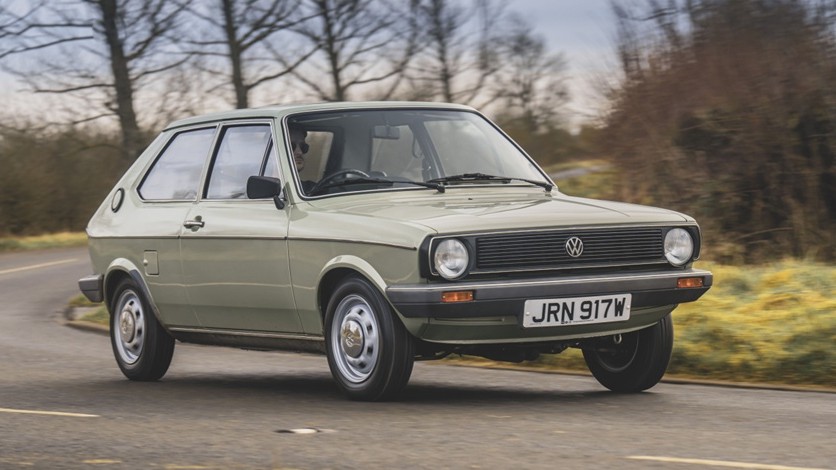
Best Cars of the Year is a British non-profit that runs the New Car World Championships. According to its website, “At the heart of the project sits a genuinely unique, hand-picked judging panel that votes for (or against), then announces the latest World Champion vehicles for consumers across the globe.” The international judges are made up of designers, engineers, motorsports legends, journalists, broadcasters, and more. They all work within a democratic system to cast their votes for any car regardless of price or volume.
The team of judges select the New Car World Champion every year, plus several cars in more discrete categories (such as Best Car Line-up, Best Sports Car, and Best Affordable Hybrid). For 2025, the Best Cars of the Year folks decided to ask the judges to determine the Best Cars of the Half Century. The Polo, which was introduced 50 years ago, was their selected winner.
“The 20 million motorists who have been buying Volkswagen Polos since 1975 cannot be wrong,” says Mike Rutherford, founder of the Best Cars of the Year—The New Car World Championships. “It’s the most consistently credible supermini of the past 50 years and has repeatedly hit the sweet spot in terms of understated design, overall dimensions, build quality, competitive retail pricing, efficiency and low standing and running costs. It’s super strong on overall affordability, durability and longevity.”
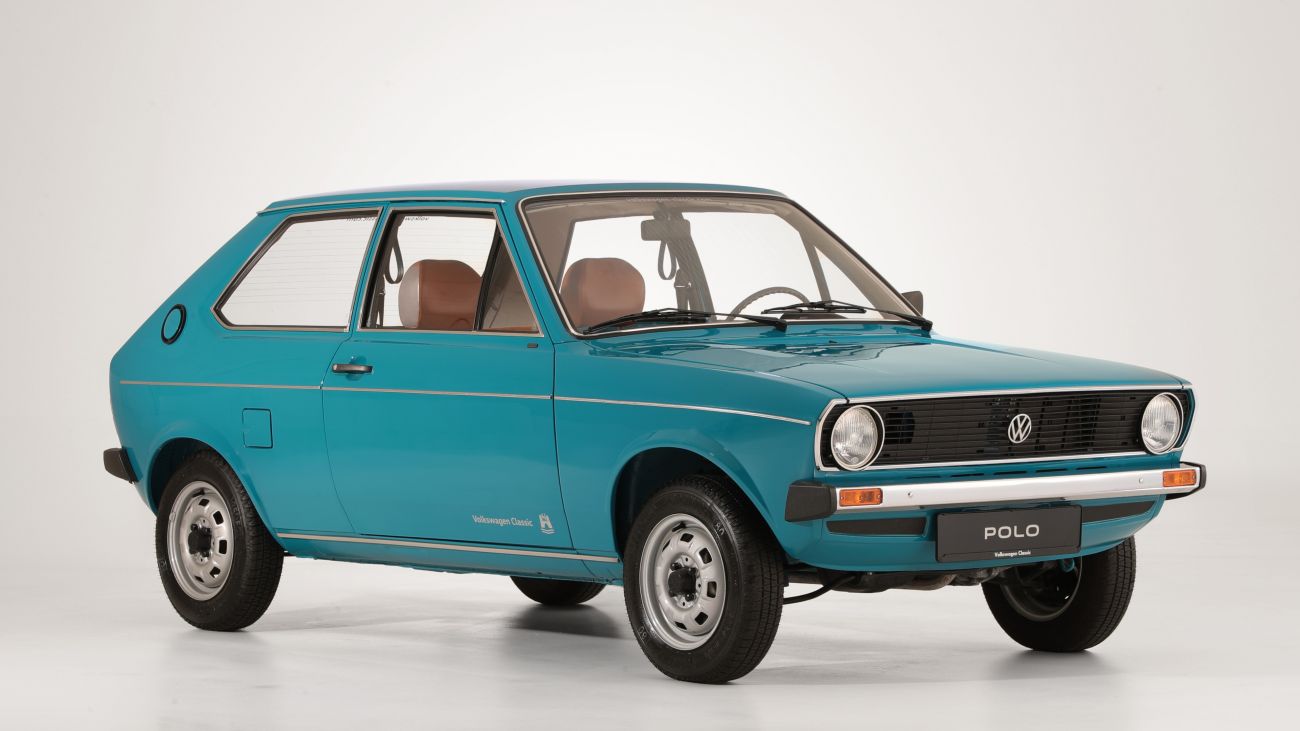
Since its introduction, the Volkswagen Polo has been among the top 20 best-selling cars in Europe, with worldwide sales of 20 million during its tenure. Interestingly, the Polo was simply a rebadged Audi 50 that was introduced the year before. However, as Audi began to primarily focus on more upmarket vehicles, the 50 was discontinued after 1978.
If we were to focus on the North American market, what do you think the best car of the past half-century would be? Tell us in the Comments section below.
In this installment of the series on the used car market of the 1970s according to Consumer Guide, it’s time for the third and final member of the Mopar trio: Dodge. Before researching and writing this story, I predict that, for the most part, the story on Dodge will be the same as Plymouth’s and close to Chrysler’s.
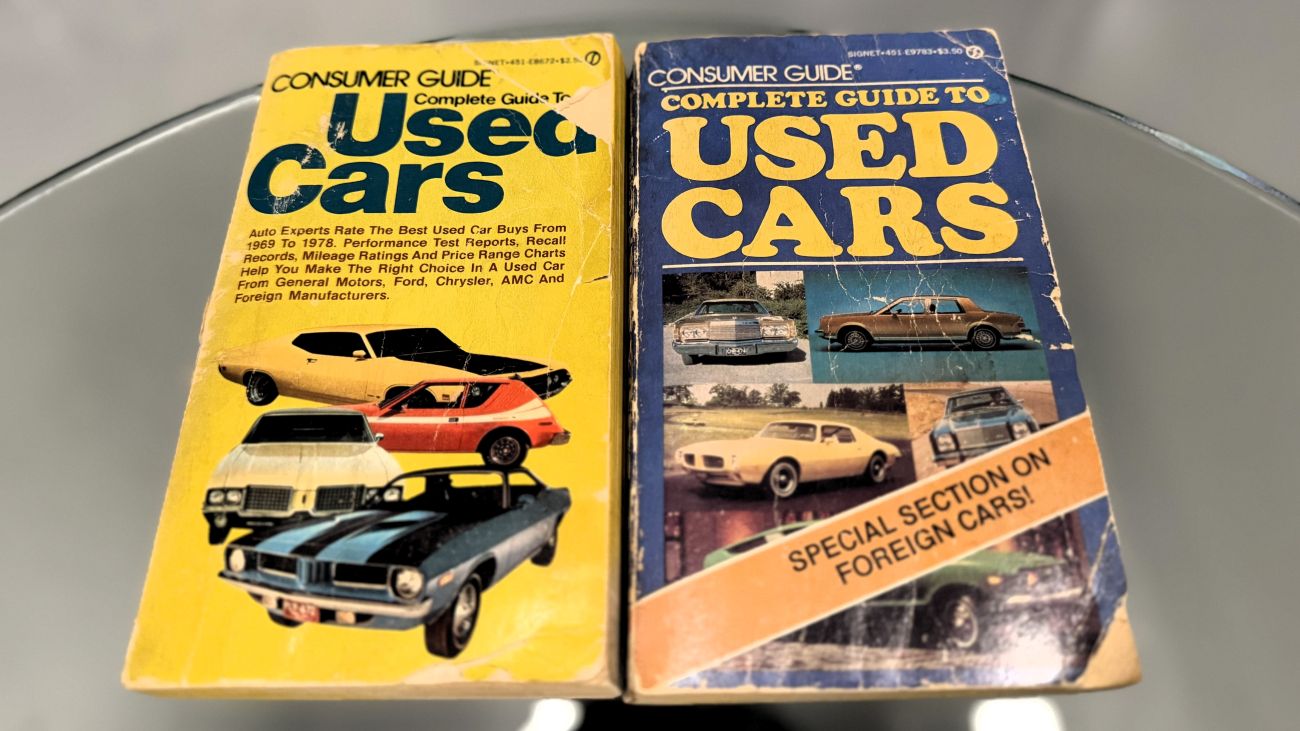
In most cases, both Dodge and Plymouth shared cars, but with different styling. There’s a few cases where Dodge had a Charger while Plymouth had no such equivalent, but the Charger is still a B-body so there’s a small chance for Dodge’s roster to be different (aside of a particular captive import). That’s my theory.
Am I correct? Let’s see what happens below. Please note the CG rating scale of 5 being Excellent and 1 being Poor.
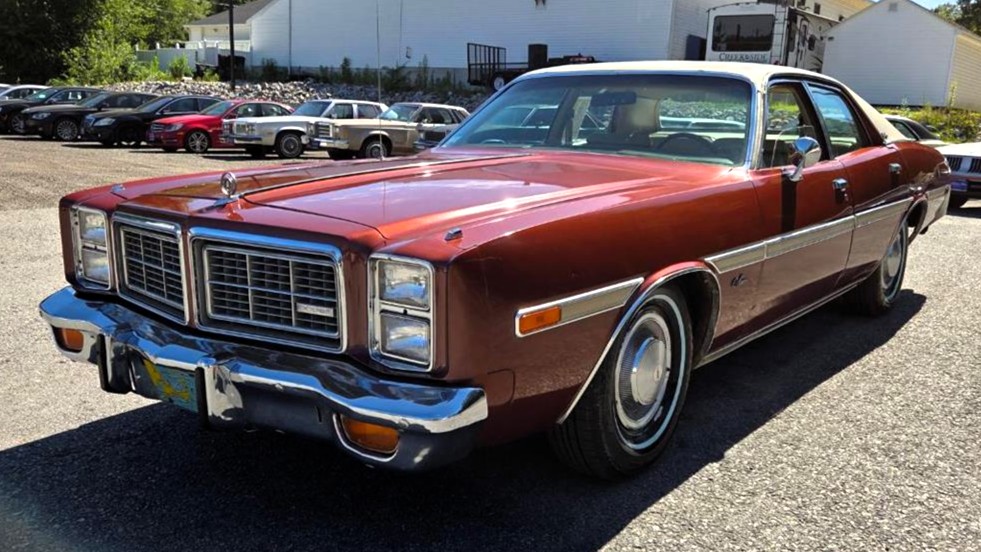
Dodge
“Management continued to believe the economy car a fad while drivers lined up for miles to get a ration of gasoline during the oil embargo.”
- Aspen: “Replaced the reliable, compact Dart in mid-1976, but proved much less trustworthy … [though] a satisfactory car if you find a good one.” CG rating: 5
- Challenger: “Main detractions are many: laughable rear seat and trunk space, poor outward visibility, feel-less power steering, and a dismal repair record.” CG rating: 1
- Dodge Charger: “Shares the dismal recall records of the 1971-74 Coronet, much of which is traceable to sloppy workmanship.” CG rating: 1-2
- Dodge Charger/Magnum: “Same lackluster repair record as Cordoba, along with rather limited back seat accommodations and spendthrift fuel consumption.” CG rating: 1-2
- Coronet: “Scores well for handling and steering response … willingness to rust means not many examples survive today.” CG rating: 1-2
- Coronet/Monaco (1975-78): “Overall repair record improved to average for all years, except 1977-78 Monaco V8s, which rated below par.” CG rating: 2-3
- Dart: All models offer better-than-average handling and road-holding, good outward vision [save coupes], and a very good repair record.” CG rating: 5
- Diplomat: “It is based on a compact car, but offers the interior room of an intermediate.” CG rating: 4
- Mirada: “About as roomy as before, and somewhat more economical.” CG rating: N/A
- Monaco/Polara: “Dirt-cheap to buy, but not operate … expect costly repairs on electrical servants.” CG rating: 2
- Monaco/Royal Monaco: “Repair record to date rates slightly below average marks [but] to its credit, the big Dodge exhibits good open-road behavior, a comfortable ride, and lots of stretch-out space.” CG rating: 2-3
- Omni: “It is peppy to drive, and handles more like an American car than a European model.” CG rating: 5
- St. Regis: “Despite the weight reductions, car is still rather heavy, even for a late-model full-size, though about as roomy as before.” CG rating: N/A
- Colt (1977-79): “Workmanship generally good … but far behind its front-drive competitors for design efficiency.” CG rating: 4
- Colt (1979-80): “An excellent used-car buy.” CG rating: N/A
Konnichiwa! Last December, I introduced you to a unique right-hand-drive Toyota coupe that my friend Ren imported all the way from Japan to the United States. Now, we get to look at a four-door sedan that made the same trek, and it happens to be up for grabs on our favorite auction site.
Featured on AutoHunter is this 1997 Toyota Aristo V300 Sedan. The car is being sold by a dealer in Mesa, Arizona, and the auction will end Tuesday, August 19, 2025, at 12:15 p.m. (PDT).
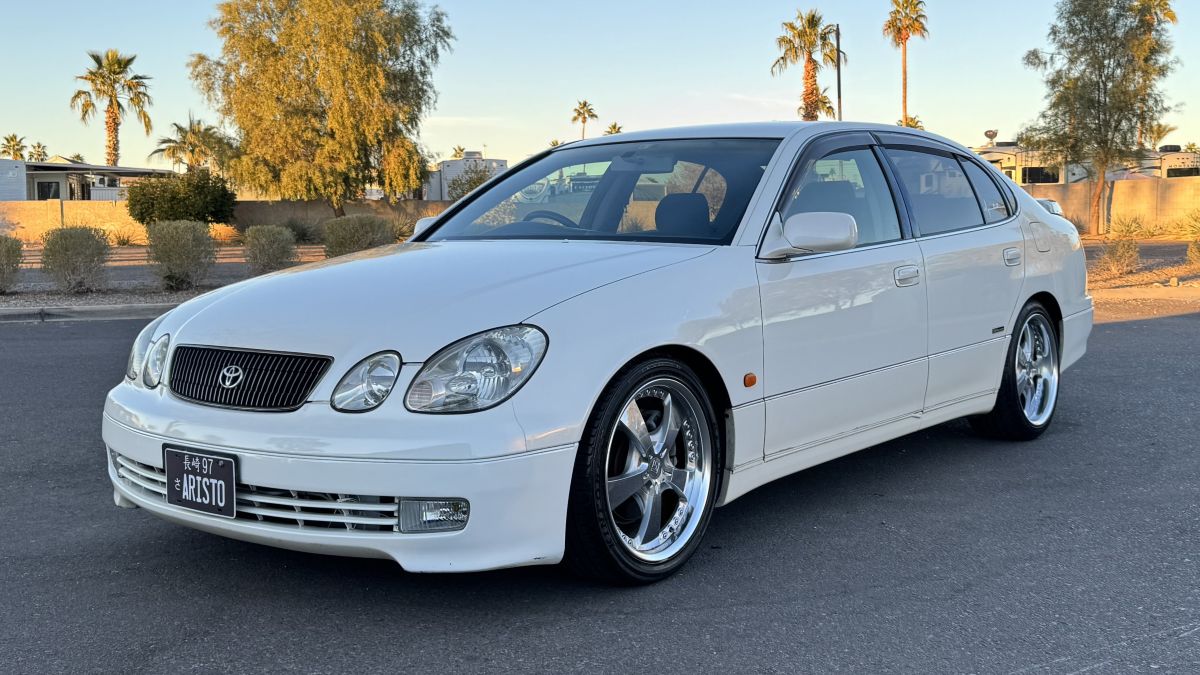
If the exterior body lines of the car look familiar, they should, because the Aristo was marketed in the United States under the Lexus GS nameplate. Parent company Toyota used the internal classification code of “S160” for the platform, which was used between model years 1998 and 2005 for the Lexus version (the Aristo variant went on sale a little earlier—lucky Japanese folks!).
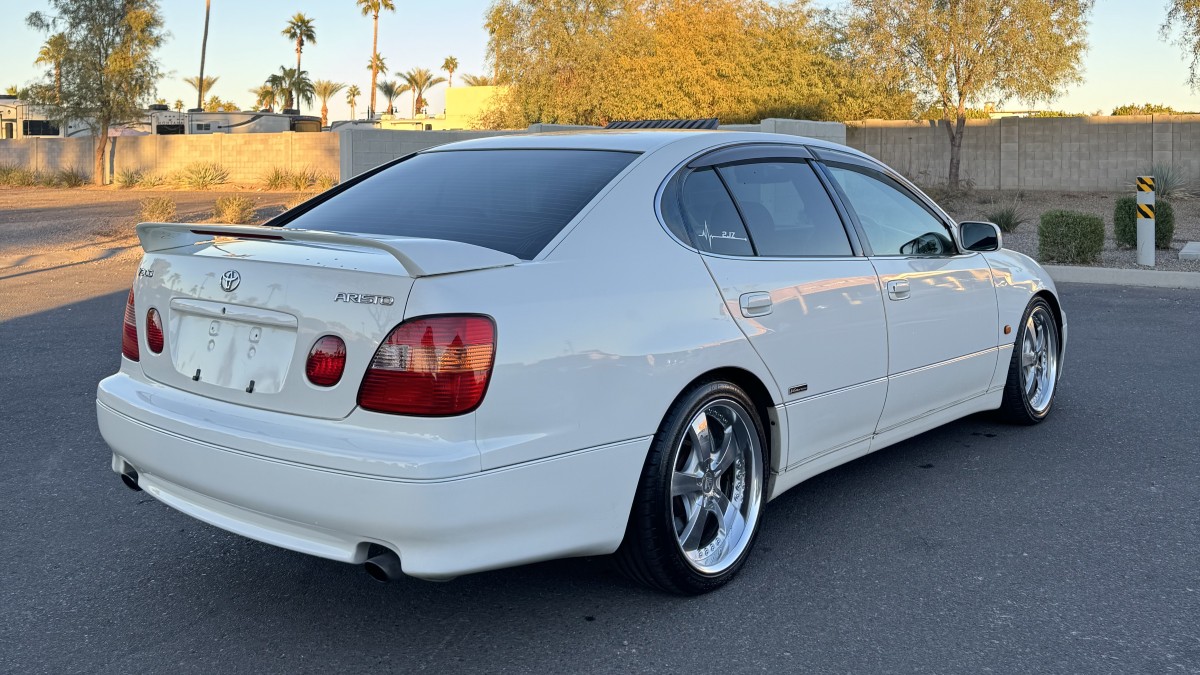
Finished in Diamond White Pearl (paint code 051), the car looks to be in well-preserved shape for being 28 years old. Exterior features include fog lamps, side marker indicators, window visors, 18-inch chrome wheels wrapped in 235/40 tires, rear spoiler, and dual exhaust system.
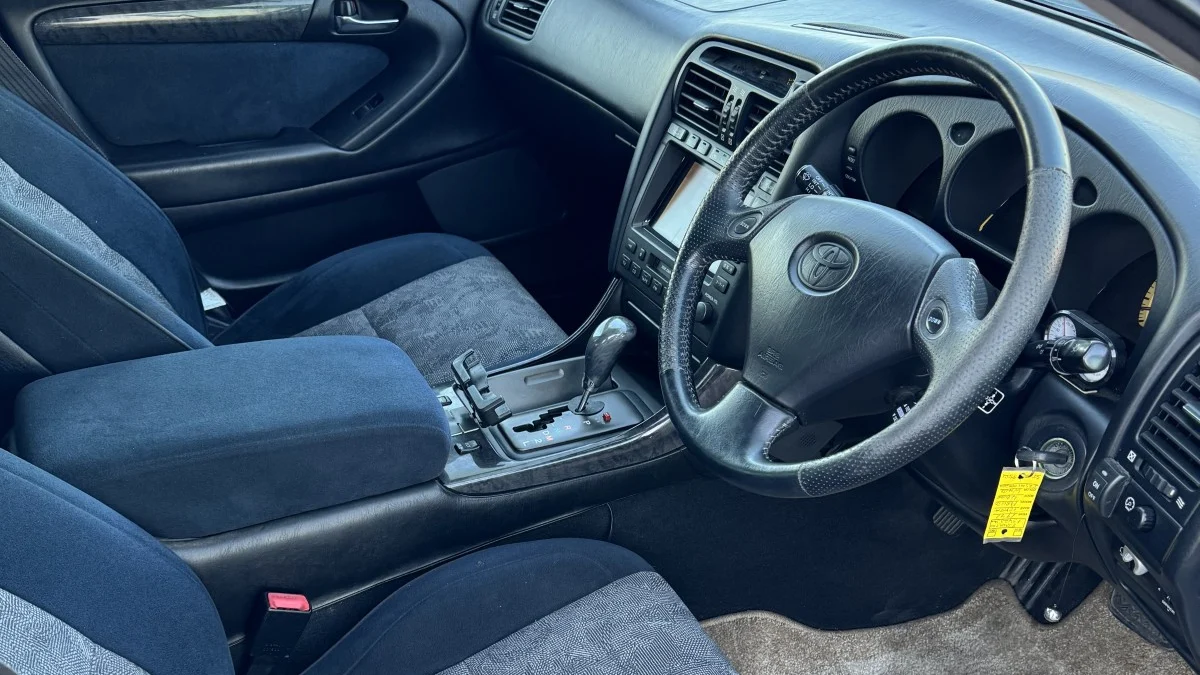
The interior, upholstered in two-tone blue cloth upholstery, has a gated shift lever as well as steering wheel-mounted shift buttons—a predecessor to today’s modern paddle-style controls. Of course, the cabin is laid out in a right-hand-drive arrangement, but luckily the learning curve is not that steep for folks who are used to being on the other side of the vehicle. Remember, the pedal arrangement is the same, it’s just the turn signal and the wiper stalk, which are reversed on a Japanese-specification Toyota.
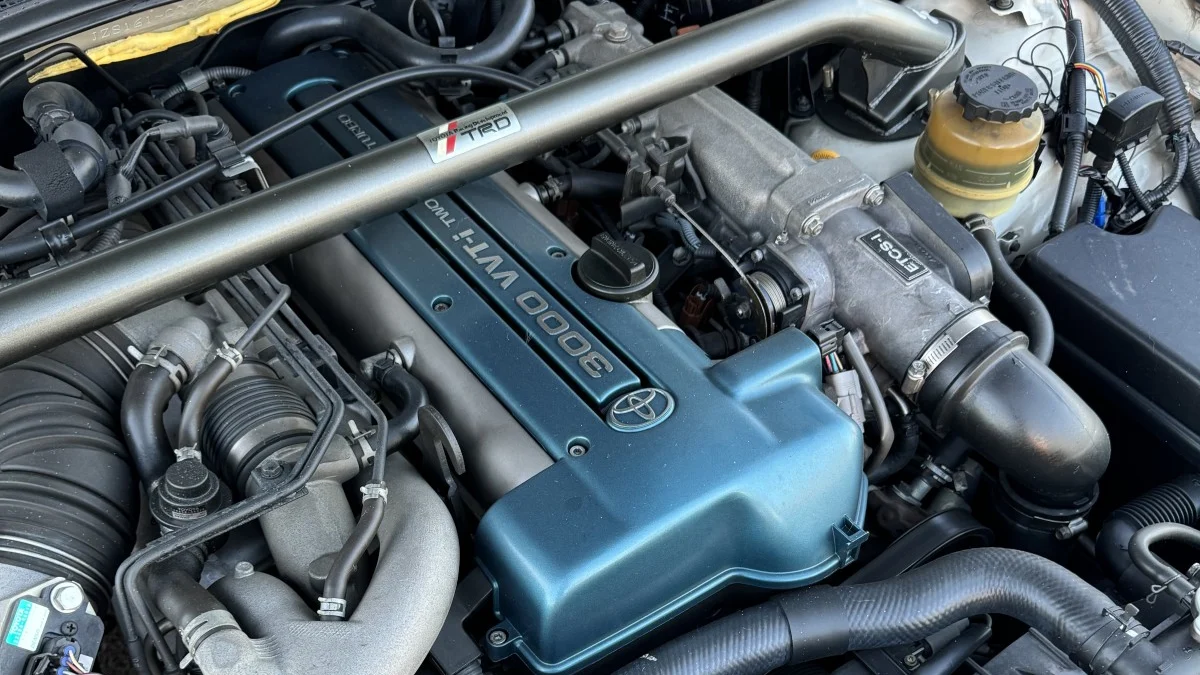
Power for this rear-wheel-drive sport sedan comes from Toyota’s turbocharged 2JZ-GTE 3.0-liter inline-six (the same engine that powers the Mk 4 Supra!) mated to a four-speed automatic transmission. Toyota rated the V300 at 276 horsepower and 332 lb-ft of torque. The car’s digital odometer reads 135,276 kilometers (which comes out to 84,056 miles).
If you want a vehicle that will make a fun conversation piece, the V300 presents a compelling case. Yes, it’s a luxurious sedan with a plush interior, but it also has a performance-oriented powertrain and legendary Toyota reliability. Sounds like a winner to me. The only catch? Your occasional visits to drive-through windows and parking garages might get a little more complicated.
The auction for this 1997 Toyota Aristo V300 Sedan ends Tuesday, August 19, 2025, at 12:15 p.m. (PDT).
Visit the AutoHunter listing for more information and a photo gallery
General Motors performance-car enthusiasts love “LS” series engines—and for good reason. The LS came with lots of aftermarket support, relatively painless maintenance needs, and plenty of power on tap. Many hot-rodders choose LS engines for their restomods. Let’s take a look back at the vehicle that came with the initial iteration of the LS. It was the first-generation Chevrolet Corvette, and that engine was code-named “LS1.”
The Pick of the Day is a 2000 Chevrolet Corvette coupe listed for sale on ClassicCars.com by a private seller in Demotte, Indiana.
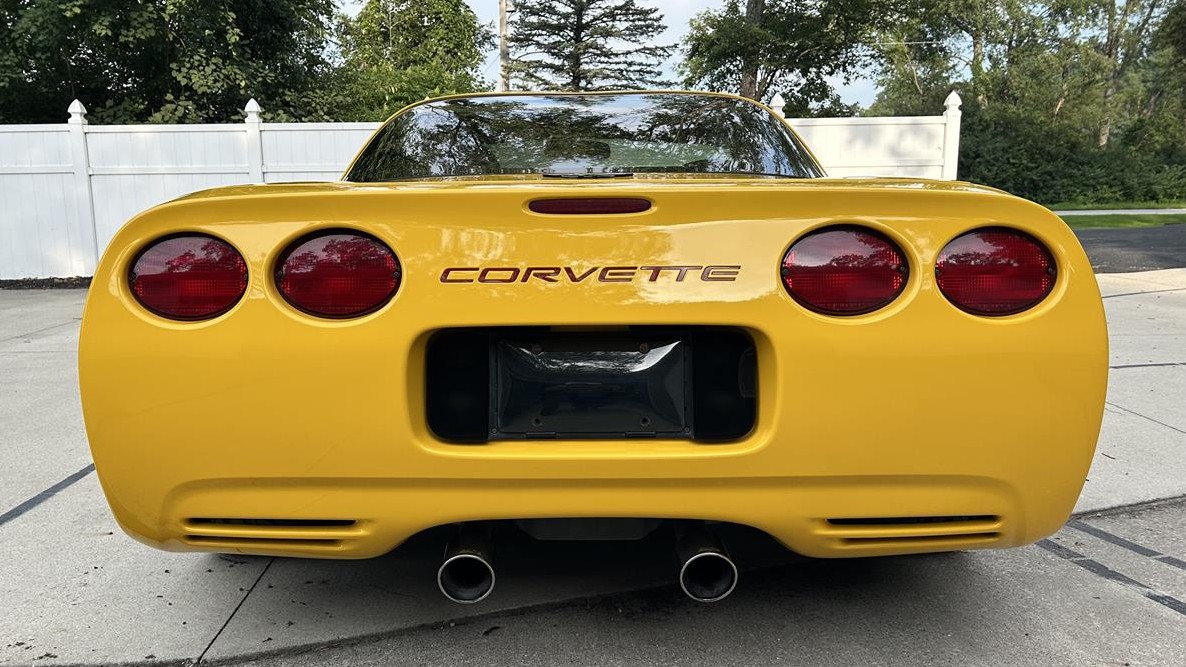
“Really clean C5 Corvette,” the listing says. Finished in Millennium Yellow (which cost $500 extra) over a black leather interior, the car has accrued just 83,000 total miles, and it looks to be well-kept both inside and out for being 25 years old.
The window sticker shows that this car was originally delivered to Terry Lee Chevrolet in Cincinnati following assembly in Bowling Green, Kentucky. The total vehicle price came out to $45,999, and the list of options was lengthy: highlights included removable roof panels, polished aluminum wheels, sport bucket seats with leather upholstery, a 12-disc CD changer, head-up display, dual-zone automatic climate control, performance handling package, six-way power passenger seat, performance axle, and more.
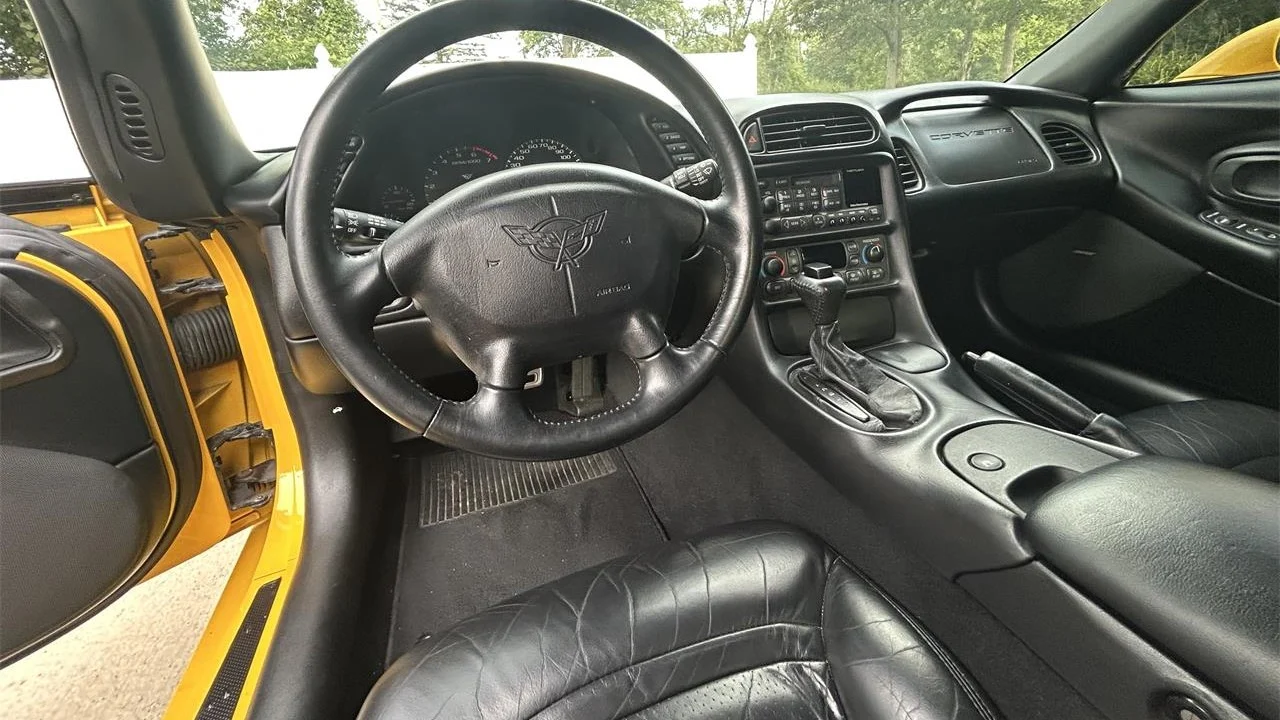
Two key custom upgrades set this Corvette apart from the rest: the first is a Borla exhaust, and the second is a set of newer wheels. The listing says they are from a Z06 model but, to me, they look like 18-inch 2010-13 Corvette “Grand Sport” wheels finished in gloss black. Either way, it’s a nice look that’s custom, yet still OEM in a way. The Hankook Ventus V12 Evo2 tires have lots of tread left on them. Plenty of rubber to burn!
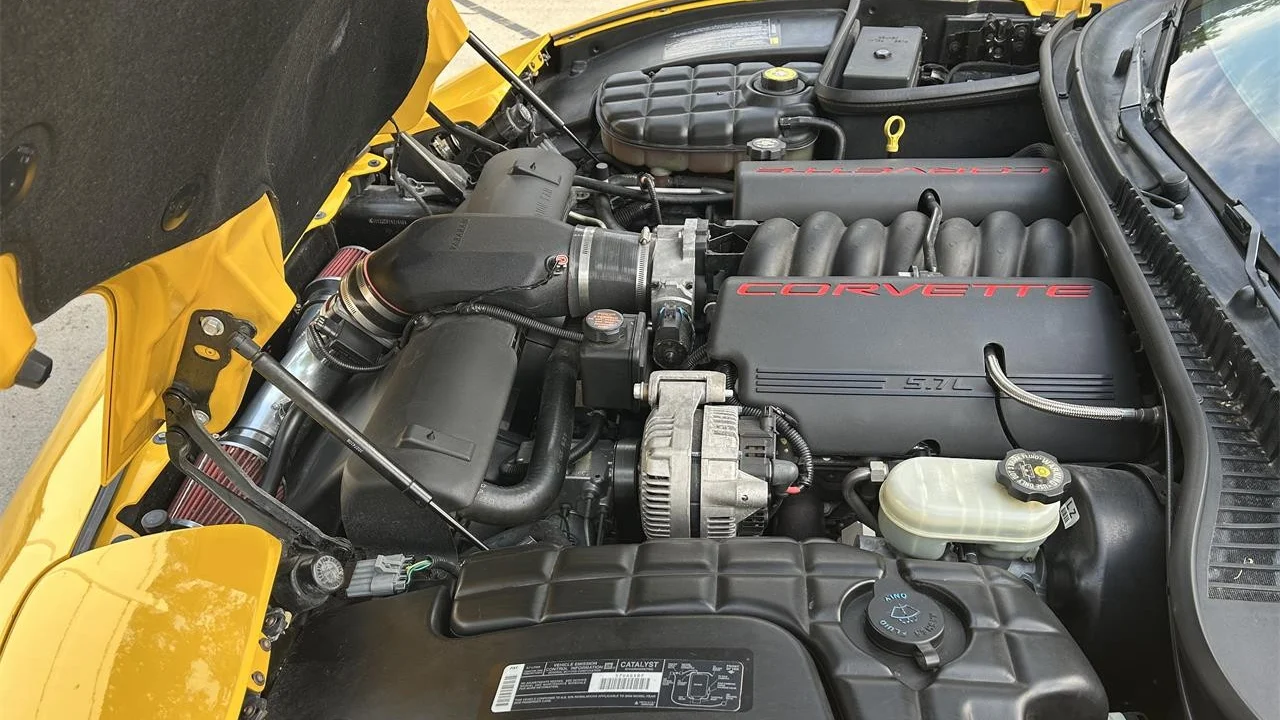
And, of course, helping to burn that rubber is the famous LS1 engine found under the hood. It’s 5.7 liters in displacement and was considered a “Gen III” small-block. Features include an all-aluminum block with iron cylinder heads, a high-performance camshaft, individual coil packs, and an ECM-driven ignition system. GM rated it at 345 horsepower and 350 lb-ft of torque—more than enough power to move a 3,246-pound C5 Corvette with authority.
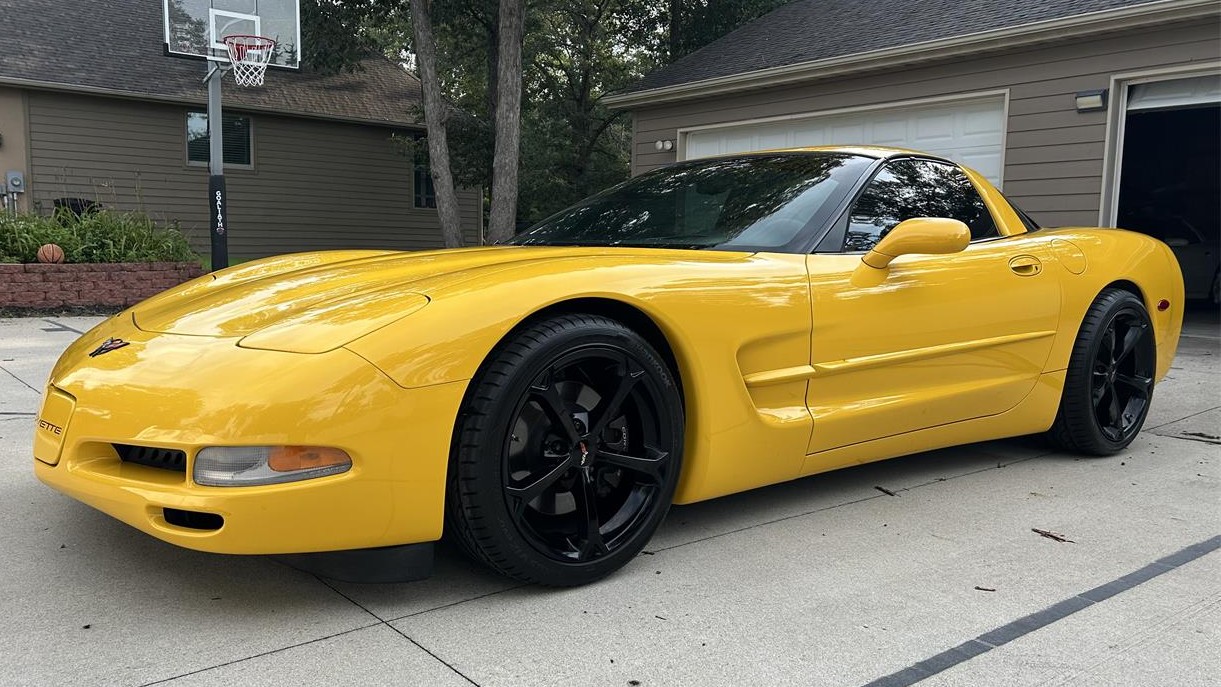
The seller includes a short video showing a start-up, interior overview, and exterior walk-around with the vehicle at idle. The LS sounds healthy, thanks in large part to that upgraded Borla exhaust system. It’s music to any car-fanatic’s ears.
The asking price is $16,750.
Click here to view this Pick of the Day on ClassicCars.com
“They should’ve put a V8 in it!” That’s probably what Jeep fans have been thinking (or screaming) ever since the automaker rolled out the Wrangler for the 1987 model year. Jeep finally brought the V8 back when it stuffed a 6.4-liter Hemi under the hood of the 2021 Wrangler Rubicon 392. Strangely, Jeep didn’t offer a V8 in the JL Wrangler’s truck sibling, the Gladiator, but that’s going to change. Not only will the mid-size pickup be available with a 392 in the future, but the big Hemi is also not going anywhere soon as the 392 or the 5.7-liter Hemi may be shoehorned into other Jeep models in the future.
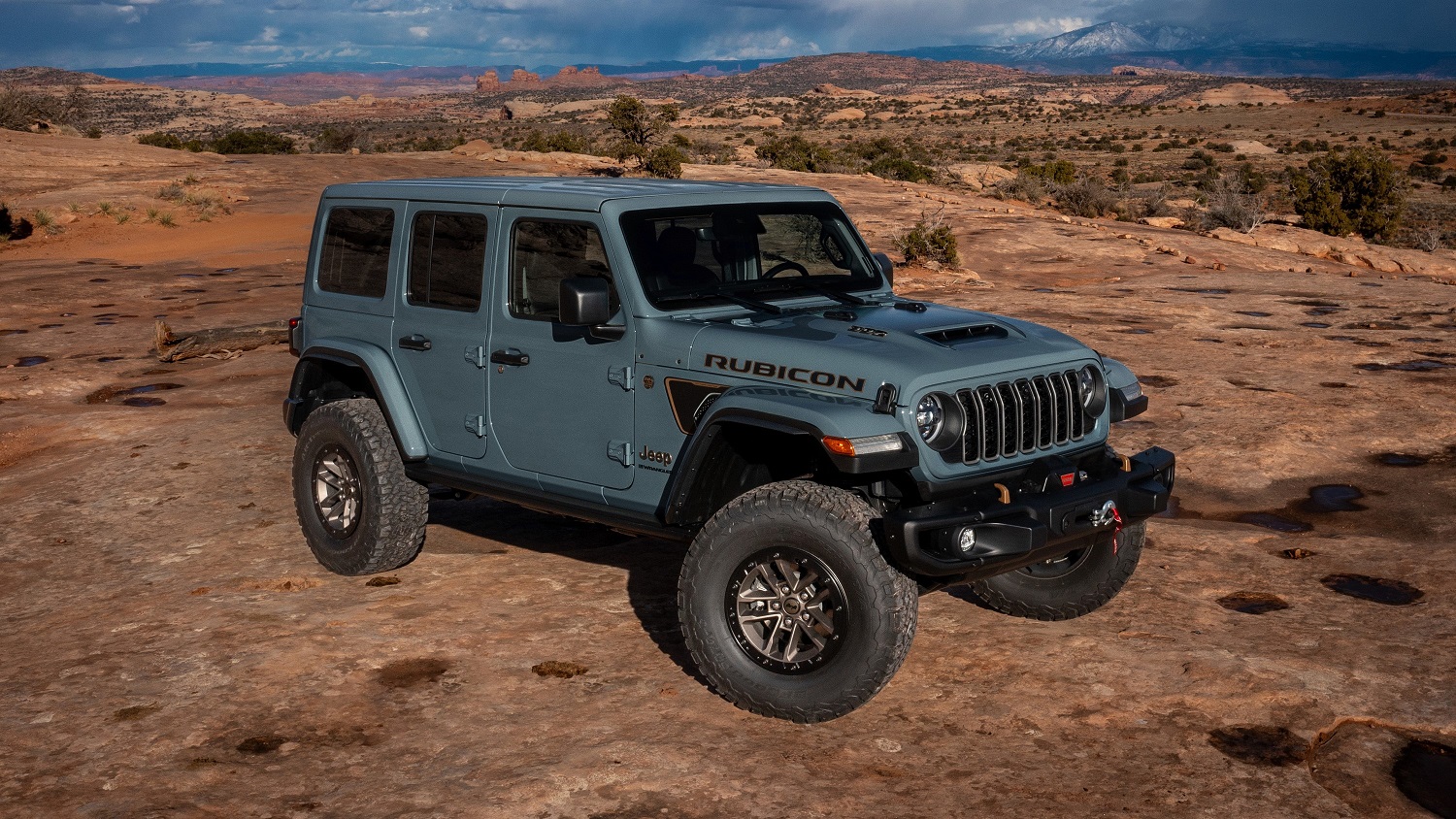
According to Car and Driver, Jeep CEO Bob Broderdorf recently said, “We will extend the availability of the 392 Wrangler, and in fact, we will tap the power and performance of the Hemi across Jeep products as new projects are already underway.” He went on to add, “Jeep fans, don’t worry, the 6.4-liter Hemi V-8 will have a home at Jeep.”
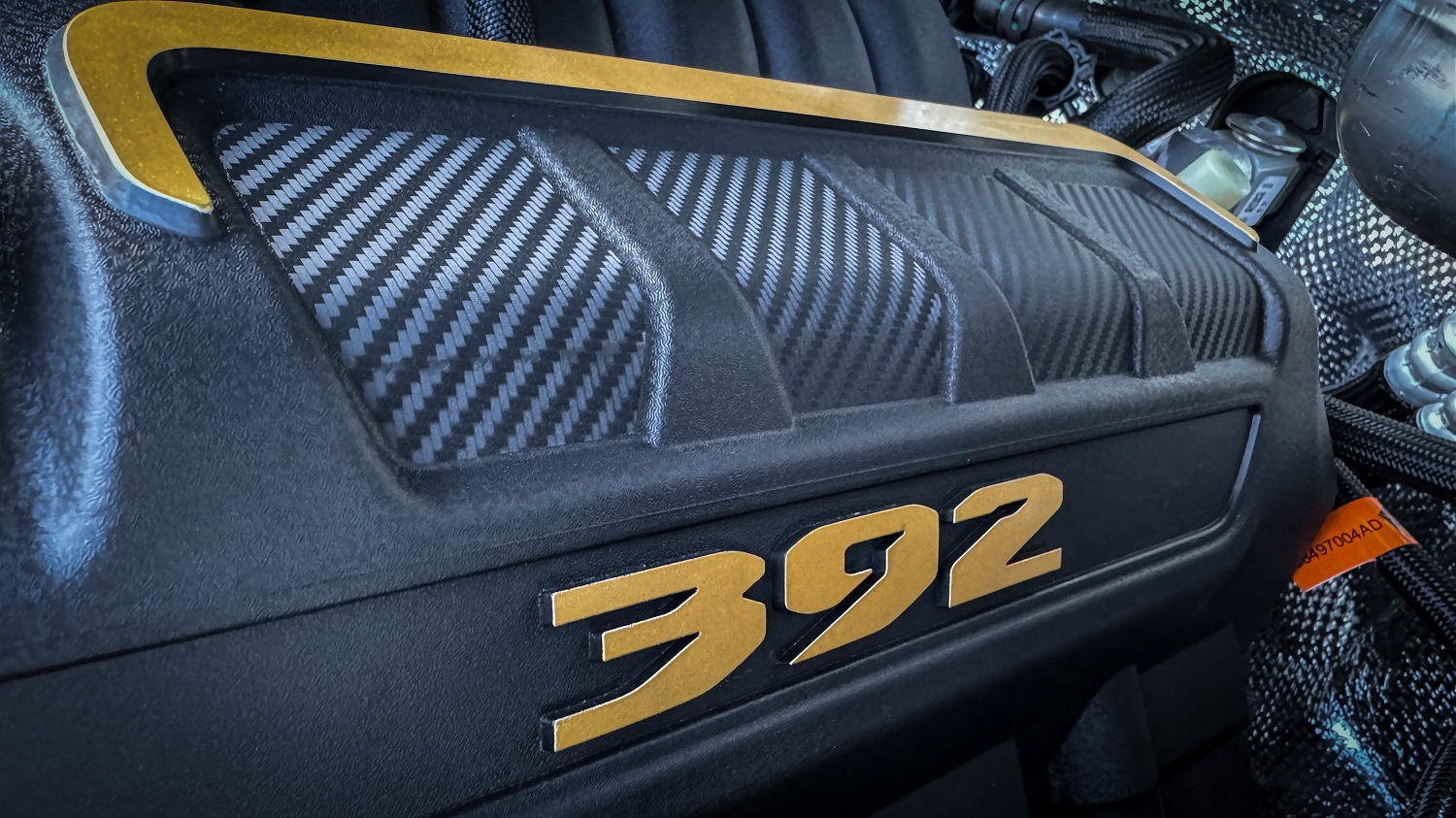
It wasn’t that long ago that Stellantis was a rebel among automakers, putting 5.7s, 392s, and supercharged 6.2-liter Hellcat V8s into a variety of its vehicles when other manufacturers focused on smaller displacement and more fuel economy. You could specify the Dodge Challenger coupe, Charger sedan, and Durango SUV (as well as the last-generation Jeep Grand Cherokee) with any of those three V8s. Ram went straight to the top when it created the 702-horsepower Hellcat-powered TRX pickup, which shared dealership space with 5.7-liter Hemi 1500s.
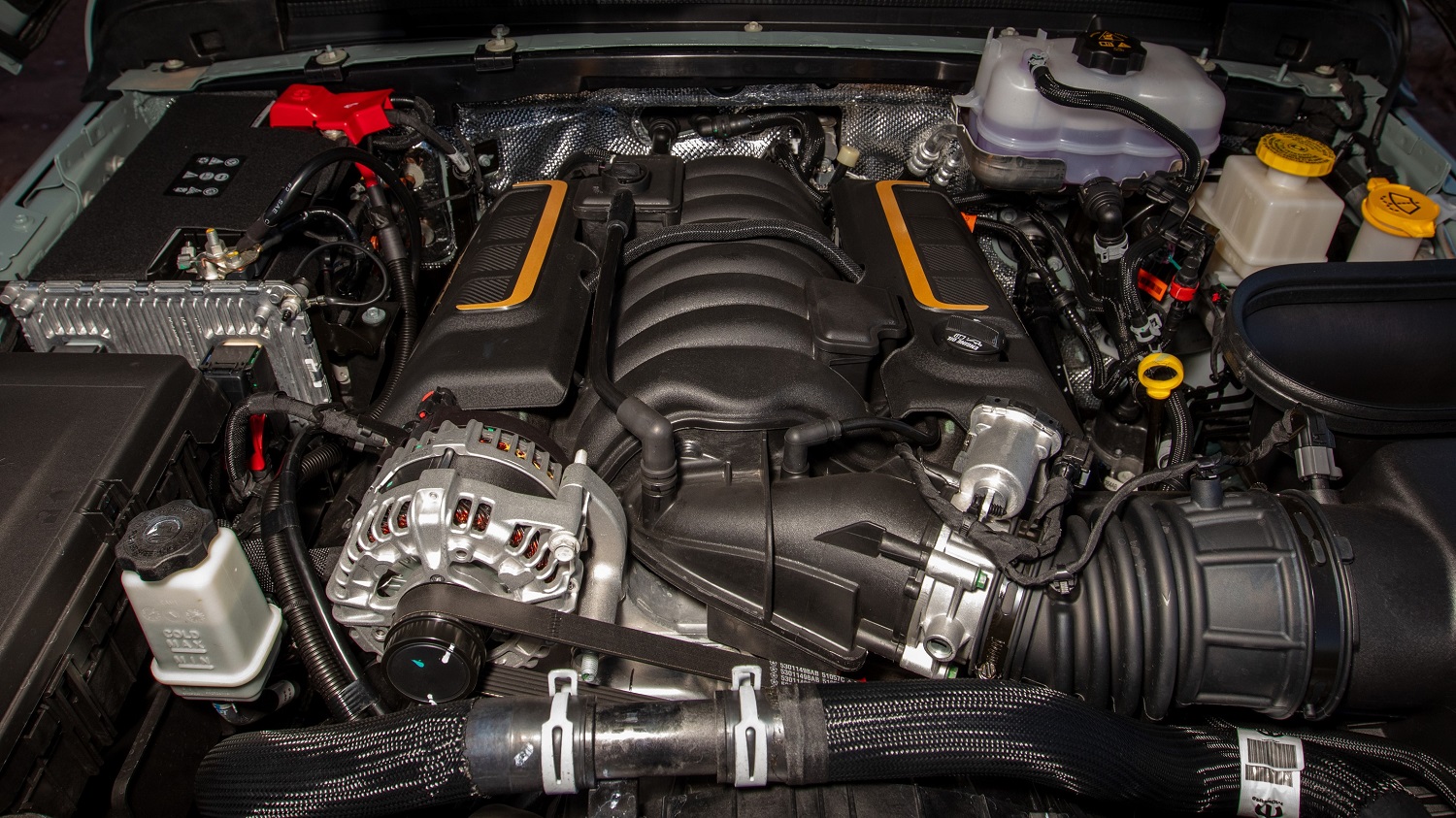
Over the last few years, Stellantis has taken V8 fans on an emotional roller coaster. The current Grand Cherokee has no V8 option at all. Dodge discontinued the long-running Challenger and Charger models and replaced them with a new Charger powered by either purely electric power or a Hurricane twin-turbo 3.0-liter I6. After pulling the 5.7-liter Hemi from its 1500 lineup and replacing the TRX with the high-output Hurricane-powered RHO, Ram reversed course and announced the return of the Hemi for 2026 and the pending resurrection of the TRX. The 2024 Dodge Durango SRT 392 AlcHEMI was the first in a series of “Last Call” models that commemorated what was supposed to be the final year of the Hemi in the Durango—key words: supposed to be. Right now, you can go on Dodge’s website and build and price a 2025 Durango SRT Hellcat. For 2026, all Durangos will come standard with a Hemi, whether it’s the 5.7, 392, or Hellcat. In 2024, Jeep marked the end of the V8 Wrangler with the Rubicon 392 Final Edition . . . which Jeep brought back for 2025 (vocabulary lesson: final is synonymous with ultimate, not penultimate).
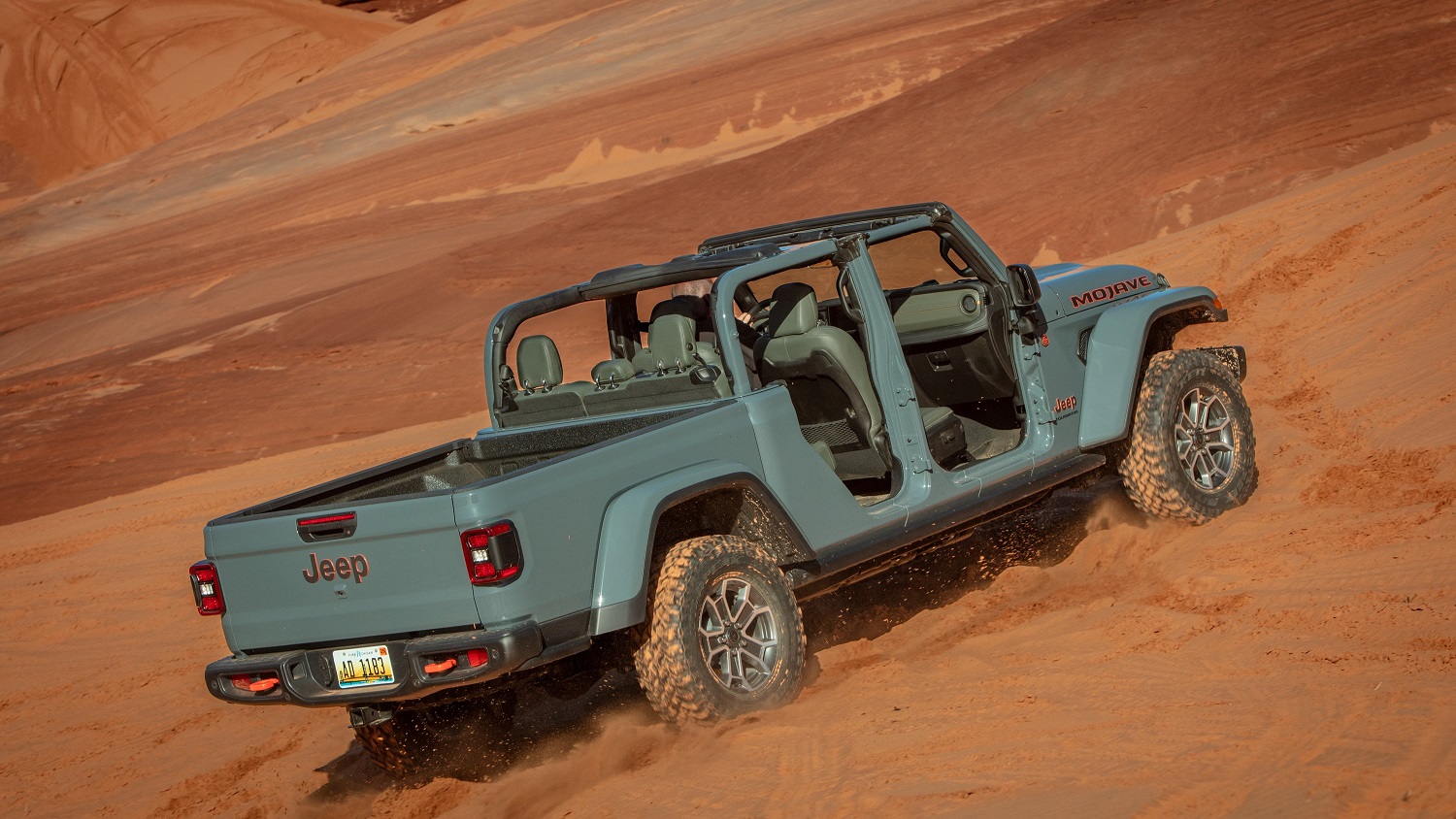
The Gladiator truck has been around since the 2020 model year and shares a lot of its DNA with the Wrangler. One thing the two vehicles have never had in common is the 392. Not only will putting the 392 in the Gladiator make Hemi and performance fans in general smile, but it will also clearly separate the Gladiator from other midsize trucks, none of which have a V8 at all. True, the Toyota Tacoma’s available i-Force Max hybrid setup is potent, but it can’t match the 392’s 470 horsepower and 470 lb-ft of torque. Among domestics, Ford Ranger Raptor’s EcoBoost 3.0-liter V6 tops out at 405 horsepower and 430 lb-ft. Neither of those pickups offer the ability to fold the windshield down and remove the top and doors for open-air off-roading—or a soundtrack that only eight cylinders can play.
How do you make a desirable car even more desirable? Add horsepower! And how do you make it hotter than that? Widen the body! Taking this formula to heart, Shelby American has introduced the 2026 Shelby Super Snake-R at Monterey Car Week.
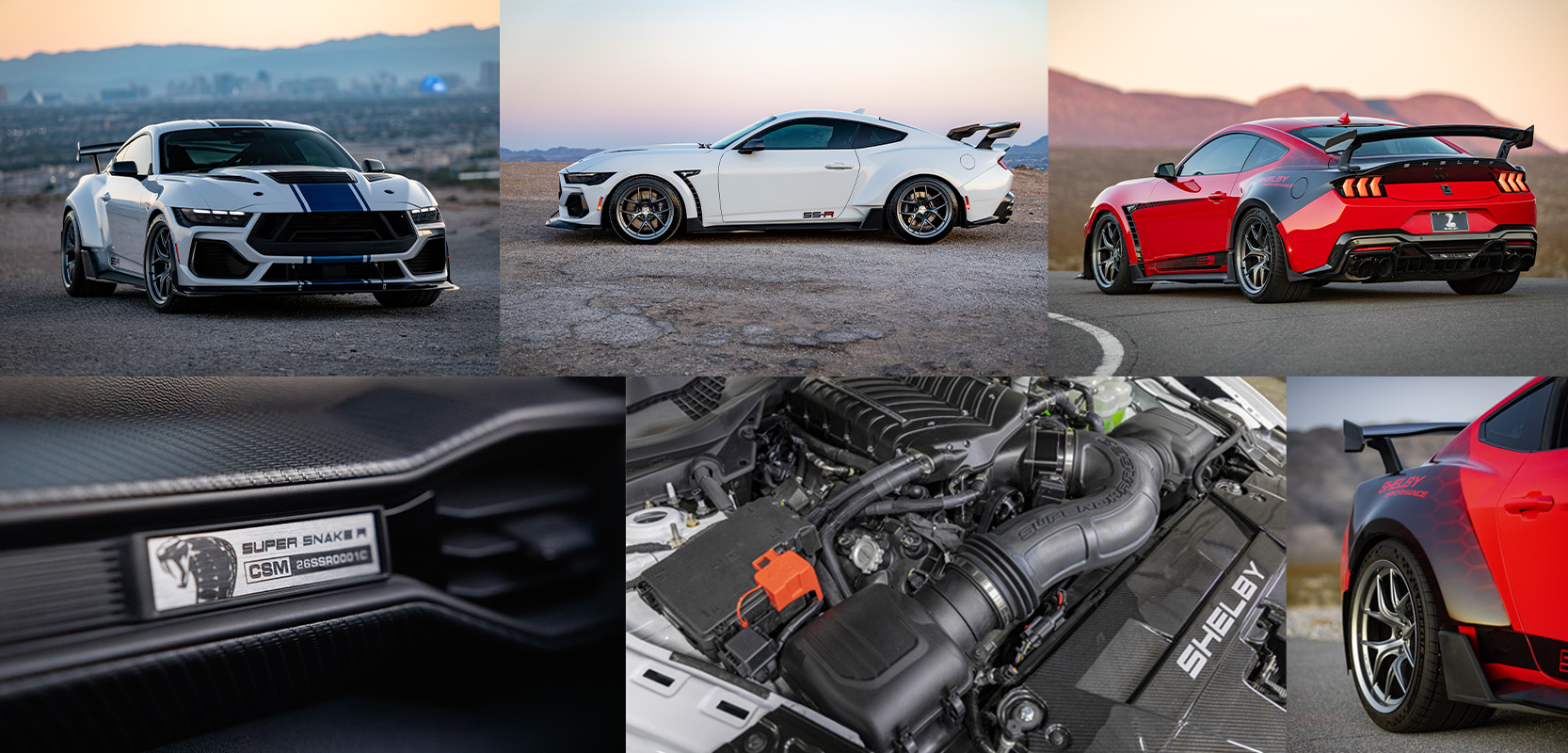
Based on the Mustang Dark Horse, this limited-edition pony-cum-sports car features the Super Snake’s 850-plus-horsepower 5.0-liter V8 and then adds components for maximum track performance that include a sophisticated, fully adjustable coilover independent suspension, a Shelby-specific chassis stiffening system, wide body carbon fiber bodywork, and enormous 335-35-20 Michelins. Aerodynamic carbon fiber parts and cooling upgrades are among the many other enhancements.
“The Shelby Super Snake’s roots come from a rich motorsport history as the first Shelby Super Snake in 1967 was built for high speed runs on the racetrack,” says the CEO of Shelby American, Joe Conway. “However, the ‘R’ model designation has never been applied to a Shelby Super Snake. We can build a small number of the 2026 model car at a much higher level of performance, which earned it the special ‘R’ badge.”
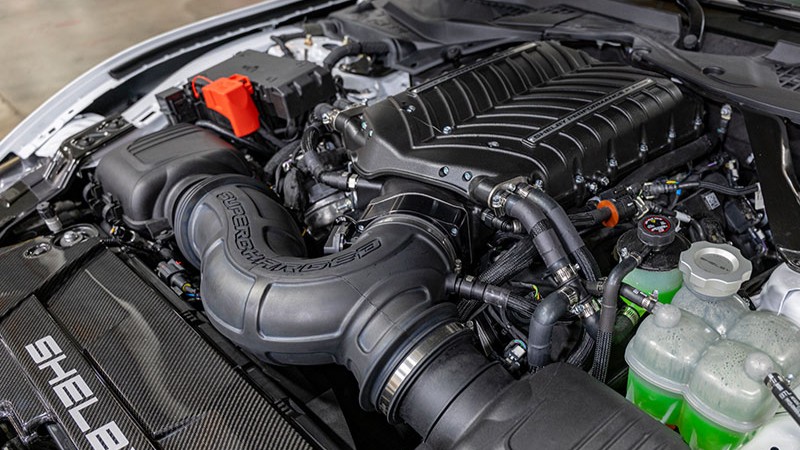
All the suspension and body changes seemingly would add a lot of weight, but thanks to judicious use of lightweight carbon fiber plus magnesium alloy wheels, lighter brake components, and rear seat delete, the Shelby Super Snake-R gains a negligible 116 pounds.
“The 2026 Shelby Super Snake-R simply has the best handling prowess that we’ve ever offered in the history of the car,” says Vince LaViolette, VP of Operations and Senior Designer for Shelby American. “From the fully adjustable coil overs to replacing rubber bushings with metal spherical bearings and a harness strut bar that ties together the rear shock towers, this advanced suspension is very impressive. We tuck everything underneath a gorgeous wide body package that allows us to fit massive tires on the car to maximize traction.”
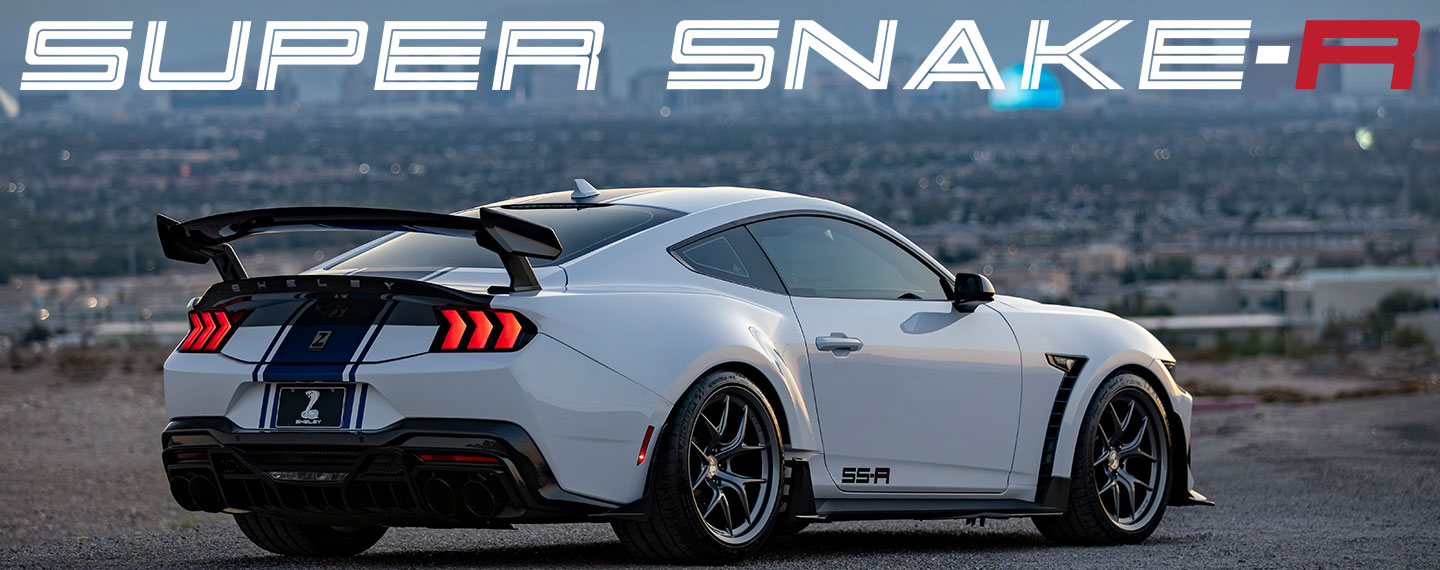
Prices start at $224,995 (based on the price of a 600A Dark Horse) for the Super Snake-R, which is available at authorized distributors in the United States and select international Shelby mod shops and distributors. Each Super Snake-R will be documented in the official Shelby Registry and come with a 3-year/36,00-mile warranty, while Ford’s powertrain warranty remains intact. Aside from the color, you will have to choose between the TREMEC TR-3160 six-speed or a 10-speed automatic.
Right now on AutoHunter, you can find this 1988 Chevrolet K1500 Silverado, a four-wheel-drive pickup powered by a 5.7-liter V8, which is paired with a replacement 700R4 four-speed automatic transmission and a dual-range transfer case. Finished in Flame Red and silver accents over a Garnet cloth interior, this first-year GMT400 Chevy truck comes from the private seller in Riverbank, California with the original owner’s manual, clean CARAX report, and clear title.
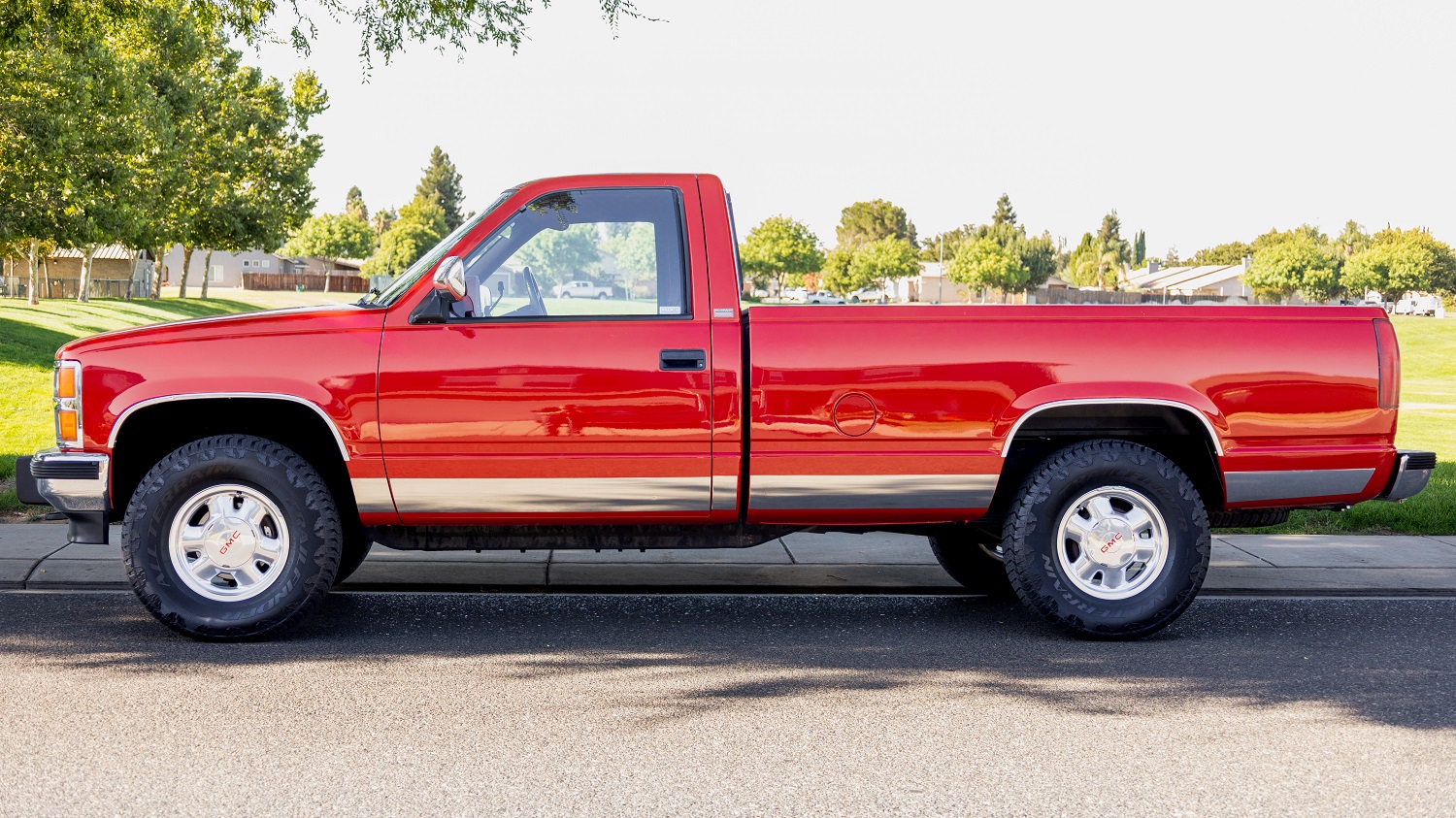
The single-cab, long-bed exterior is finished in Flame Red and accented with bright wheel arch and silver lower-body trim. Equipment includes a black plastic front air dam, chrome bumpers, bright mirror housings, sliding rear window, black bed mat, bright tailgate protector, polished exhaust tip, and Chevrolet bow tie hitch receiver cap.
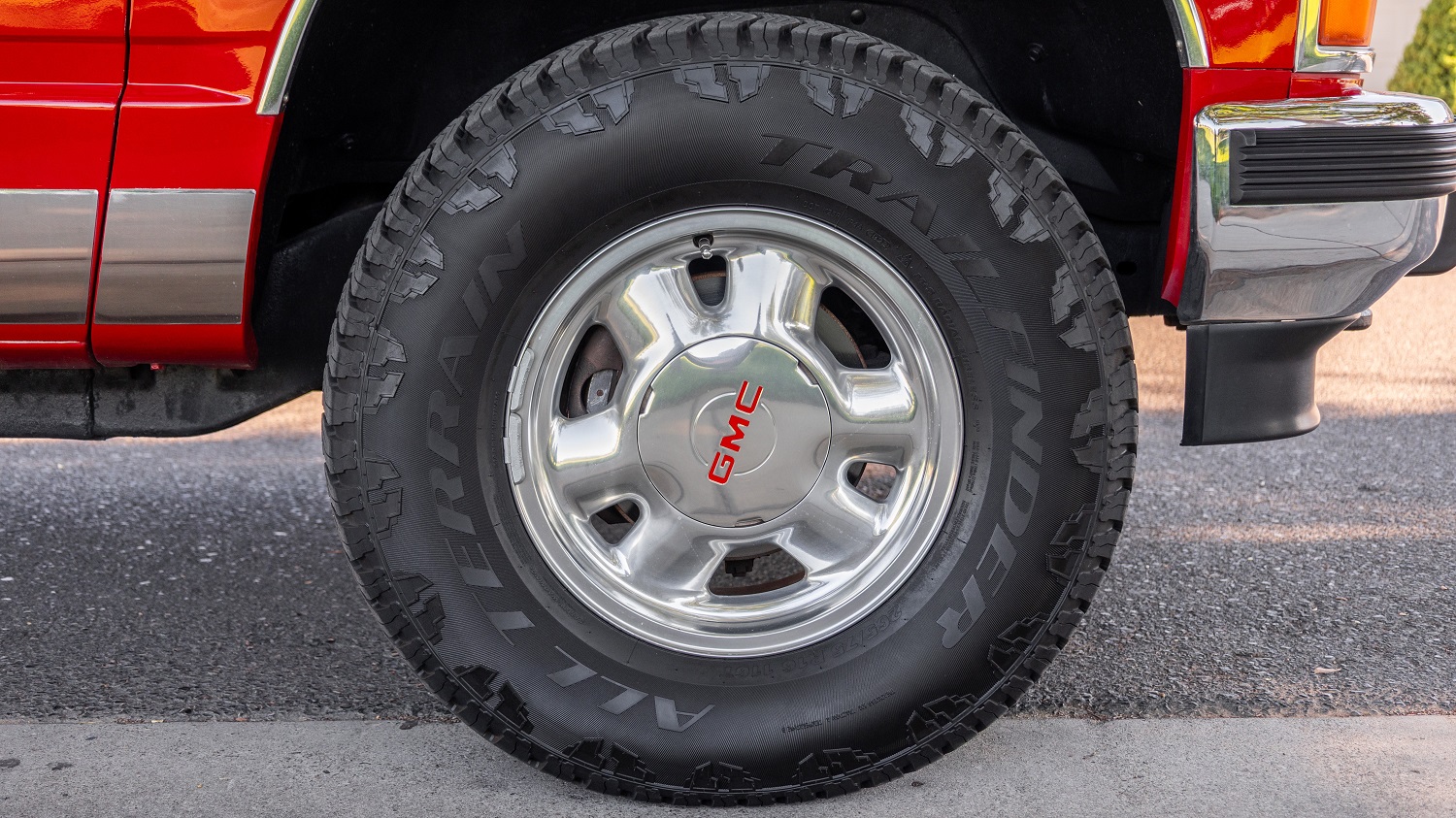
You may notice the 16-inch, six-spoke wheels aren’t original to this truck, but they are GMC wheels from the automaker’s GTM800 era of trucks. They come wrapped in a set of new 265/75 Trailfinder All Terrain tires.
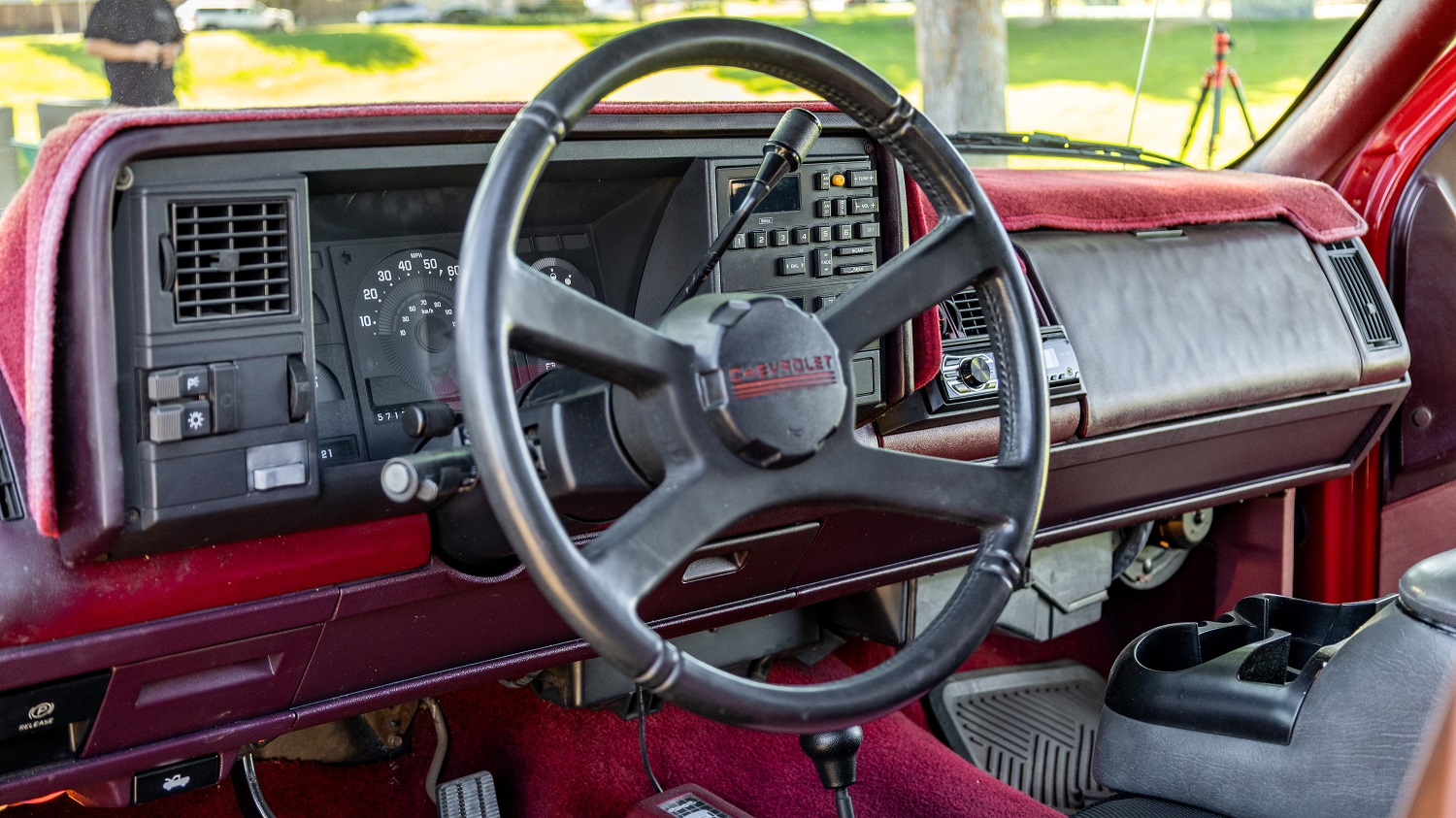
Inside the cab, the Garnet cloth bench seat is protected with a black and red cover. Features include power locks and windows, cruise control, tilt steering column, power steering, carpeted dash cover, air conditioning, AM/FM/CD Pioneer stereo, and removable center console with armrest and cup holders.
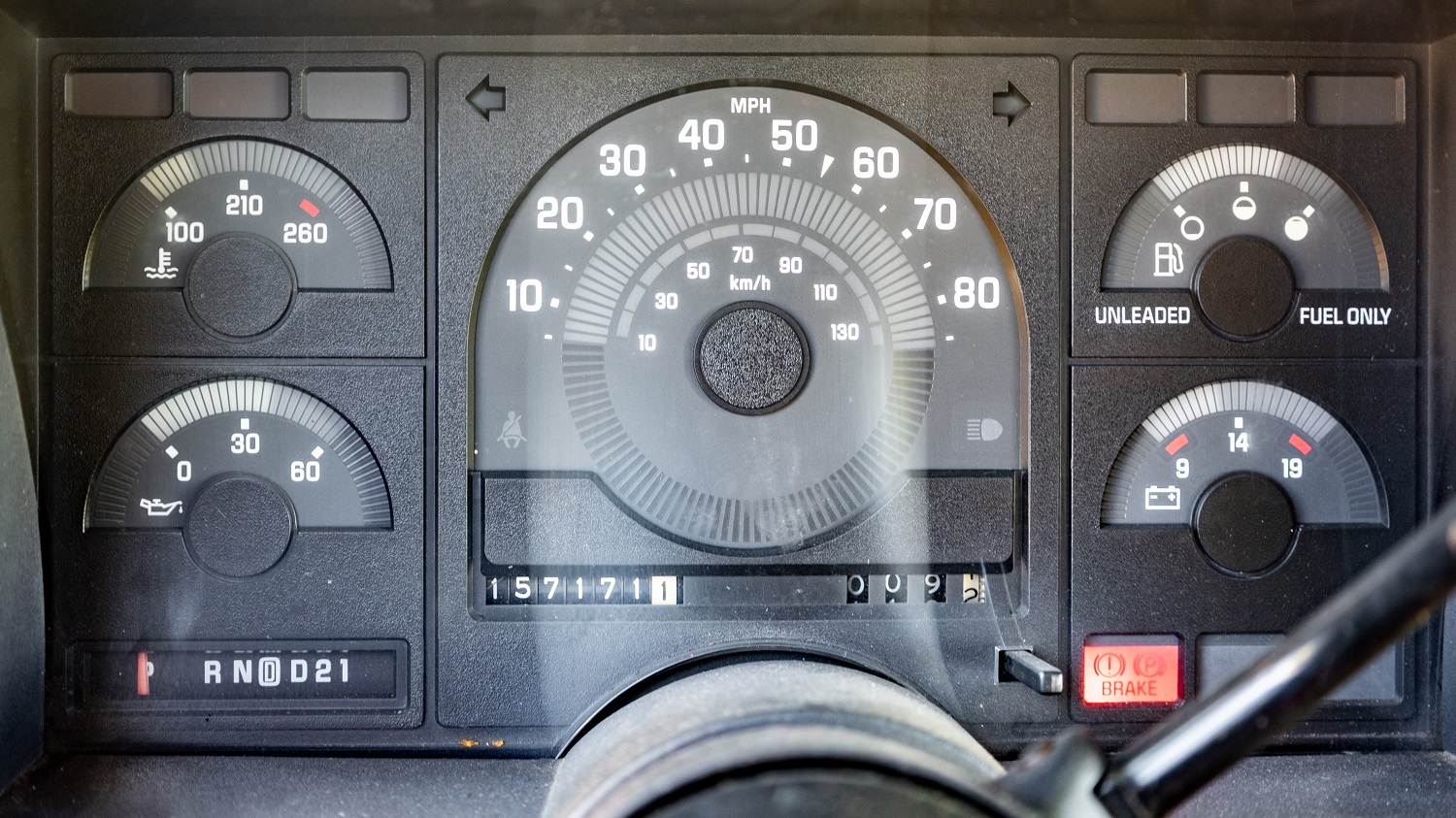
Instrumentation consists of an 85-mph speedometer and gauges for the temperature, oil pressure, fuel level, and voltage. The analog odometer shows 157,171 miles, a slight increase from the CARFAX report’s most recent mileage figure of 156,982 miles from June 2024.
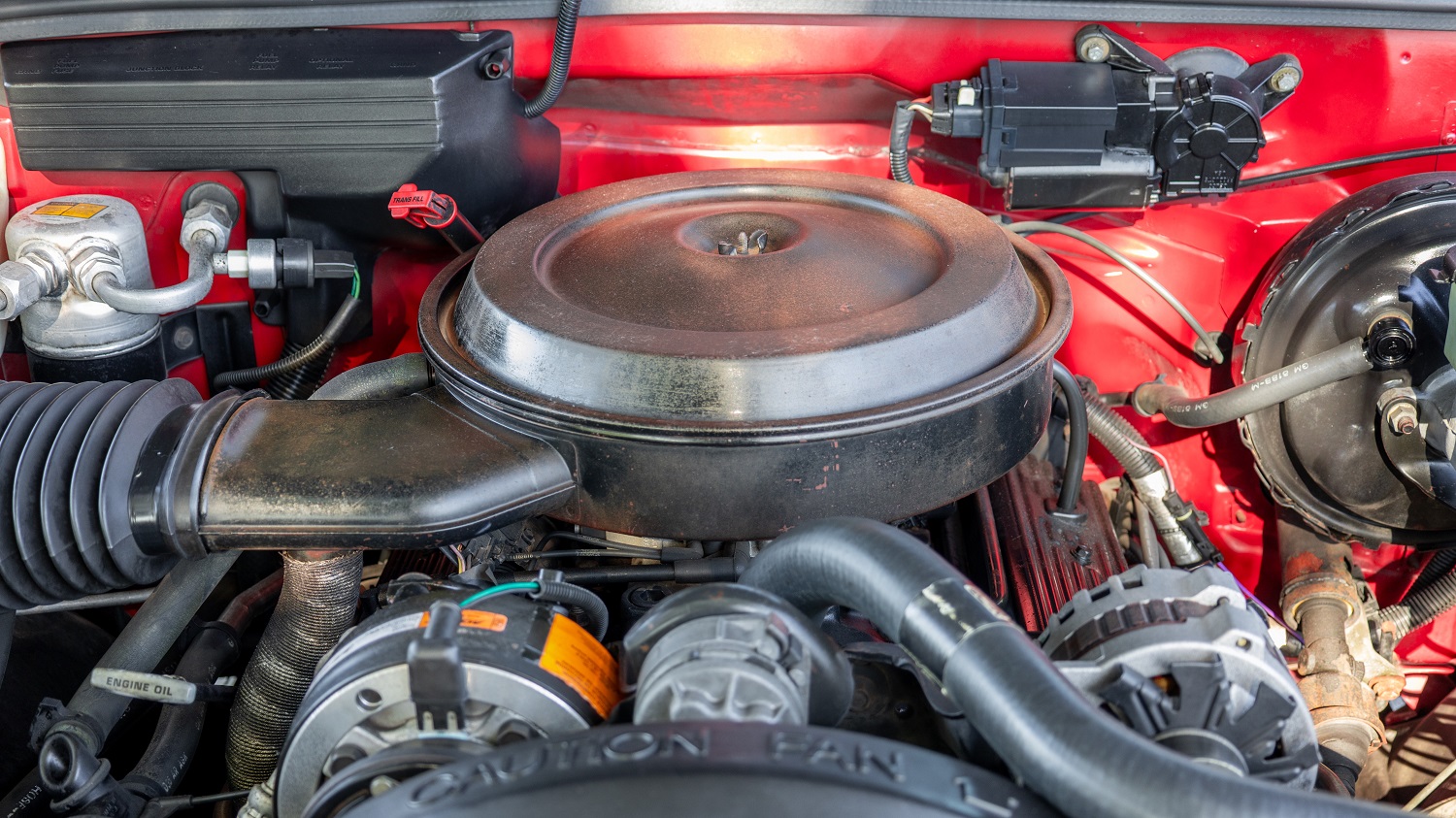
This truck gets work and family duties done with the power of a fuel-injected L05 5.7-liter V8 that was factory-rated at 210 horsepower at 4,000 rpm and 300 lb-ft of torque at 2,800 rpm. A replacement 700R4 four-speed automatic transmission and dual-range transfer case send the engine’s output to the street or trail. Power front disc and rear drum brakes help make sure this truck gets to its destination—whether that’s a lumber yard or a campground—in one piece.
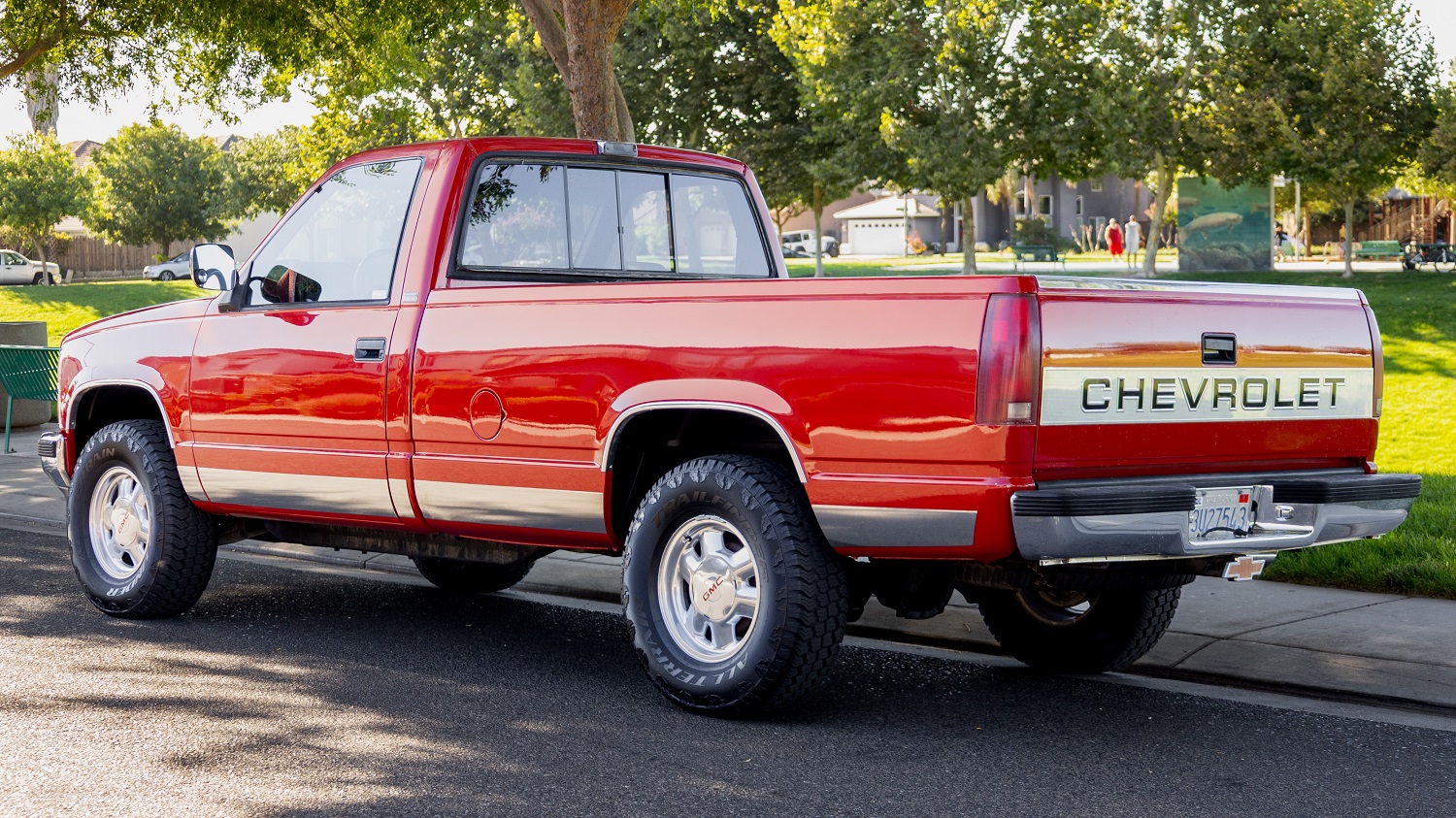
If you want this 1988 Chevrolet K1500 to make it to your driveway, place your bid before the auction ends on Friday, August 22, 2025 at 12:00 p.m. (PDT).
Visit the AutoHunter listing for more information and a photo gallery
It seems most people gravitate to cars that are dolled-up—they want stripes, chrome, and spoilers. But there’s a few who are content to sit in the shadows and have no need to make a grand entrance. Our Pick of the Day is the kind of car for the latter folks who aren’t out to impress, but, ironically, it’s quite an impressive car. This 1969 Ford Mustang SportsRoof is listed for sale on ClassicCars.com by a dealership in Toronto, Ontario, Canada.
The Ford Mustang was redesigned for 196 to be bigger, bulkier, and badder than before. The wheelbase remained the same, but the length from nose to tail grew by around four inches and weight went up by several hundred pounds. A step backwards? It would seem so, but the 1969 model has become a collector’s favorite, and it’s easy to see why, thanks to several highlights within the Mustang portfolio.
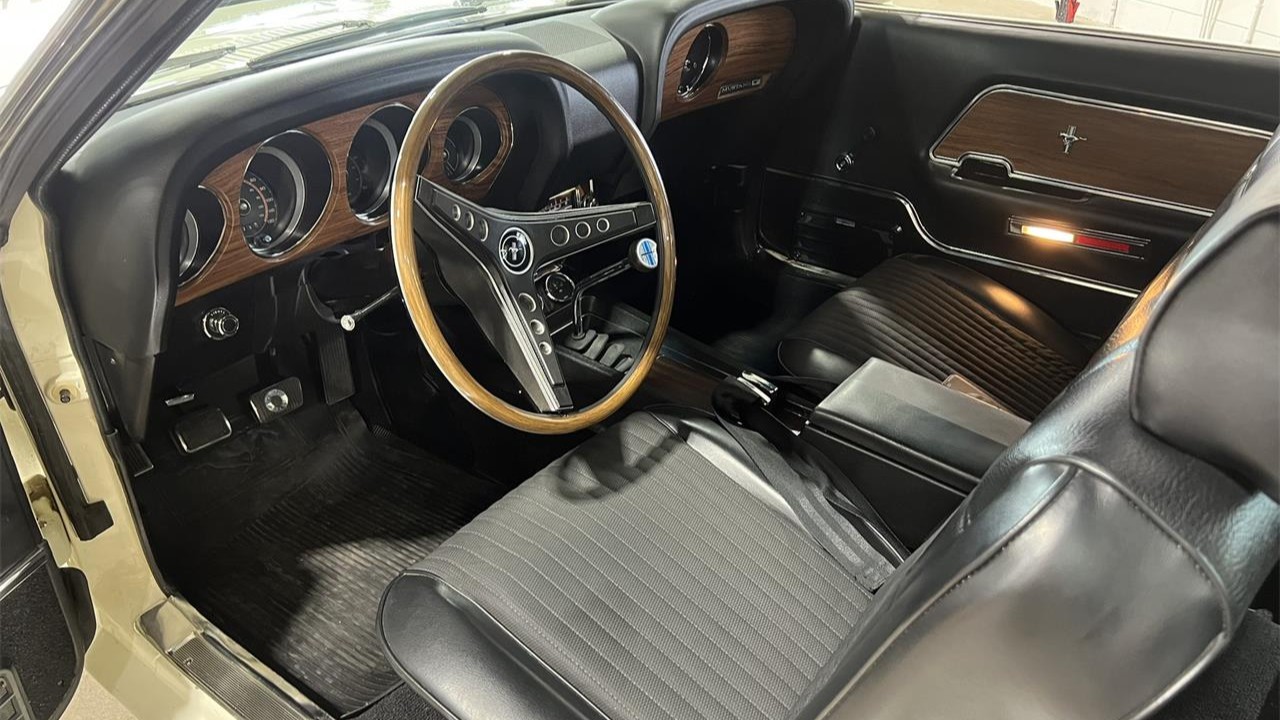
First were the engines. New was a 351 Windsor small-block, available in both two- and four-barrel configurations. This was a much-needed addition under the hood as Ford previously had no engines between the 302 and 390, while Camaro customers had a performance 302, a pair of 327s, a performance 350, and a 396 big-block in several states of tune. The new Ford small-block filled that gap.
Next were the models. Just like the Mercury Cougar proved that there was a market for a more upscale pony car, Ford followed suit with the Mustang Grande, a luxuriously trimmed Mustang Coupe that raised the ante among entry-level pony cars. Then there was the mid-year introduction of two homologation specials: The Boss 302 was created to certify Ford’s efforts in the Trans-Am circuit, while the Boss 429 was created to certify the new 385-series engine for NASCAR (the rules never indicated the engine needed to be installed in the same car that was racing). Both were based on the SportsRoof. The GT package also made its final appearance in all three body styles.
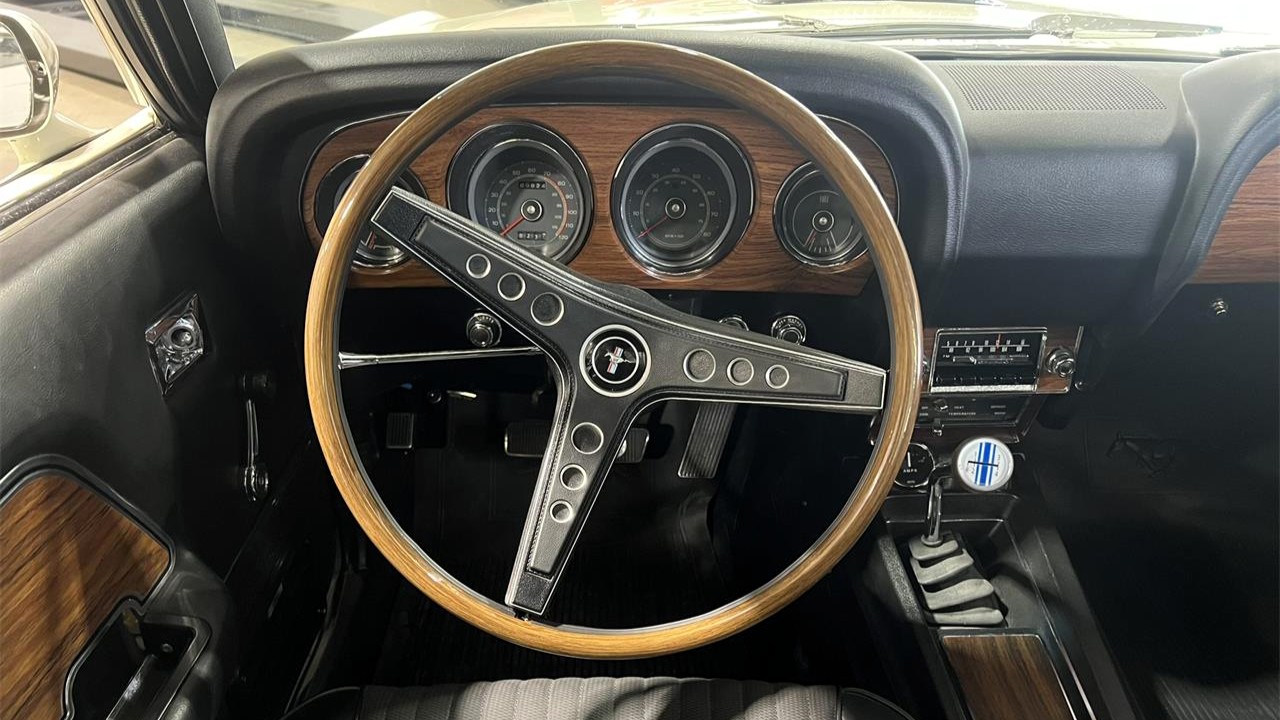
And then there was the Mach 1. Based on the SportsRoof, this new model was reflective of Ford getting its performance marketing in order and creating an image model. The Fairlane series had suffered from a similar predicament, so the introduction of the Mach 1 and the Fairlane-based Cobra was enough to properly bring Ford up to speed in the youth market. The Mach 1 came standard with a 351 two-barrel, but buyers could specify a 290-horsepower version with a four-barrel, a 320-horse 390, or the already-famous 335-horse 428 Cobra Jet. But it wasn’t what was under the hood of the Mach 1 that was newsworthy as much as how the car presented itself: longitudinal reflective side stripes, a low-gloss black hood and cowl, dual racing mirrors, high-back bucket seats, a console, molded door panels with integral arm rests, fat tires with chrome styled steel wheels, and more. It may be a cliché, but the Mach 1 looked like it was speeding while completely still.
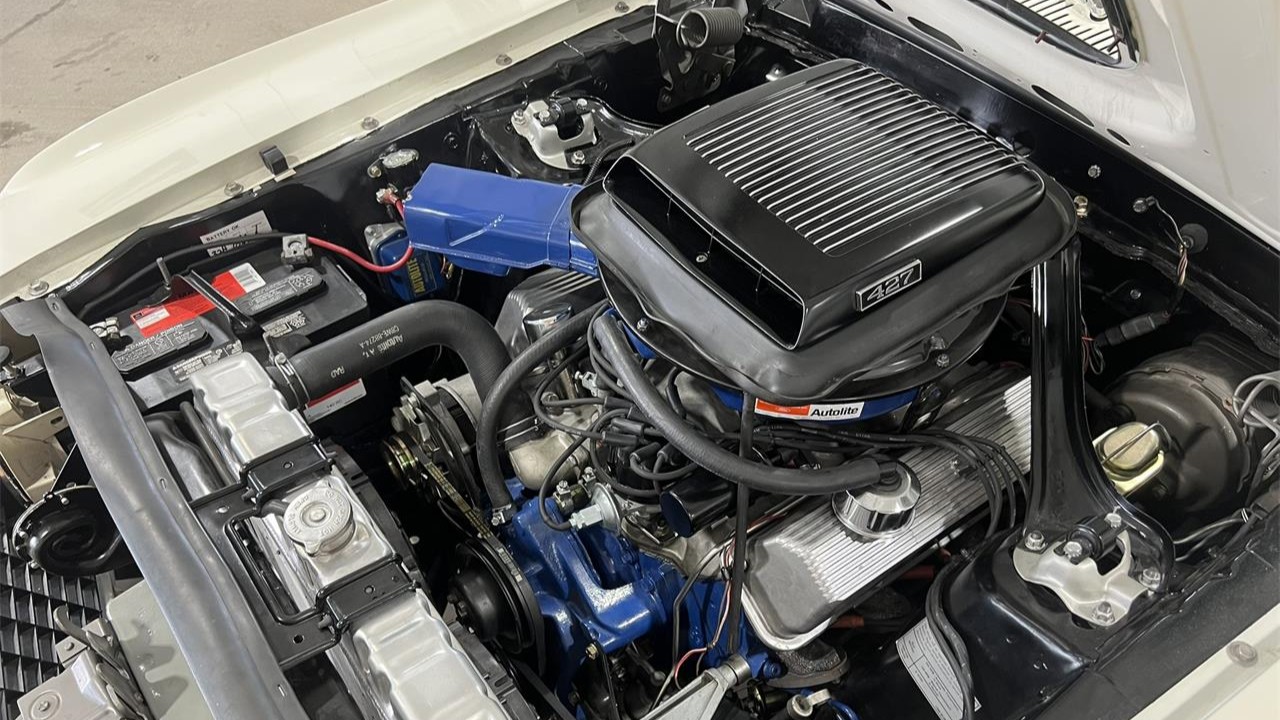
Alas, the Mach 1 weighed 266 pounds more than an equivalent SportsRoof and over 200 pounds more than a SportsRoof with the GT package. Sure, the Mach 1 had image in spades, but, ironically, it also was equipped more like a comfortable gran turismo. Want a car built for speed? A basic SportsRoof with any of the performance engines was your best bet.
To some, buying a car isn’t about being Mr. or Mrs. Popular, unless that means being the one with the most racing trophies. This 1969 Ford Mustang SportsRoof looks like it was ordered to be the hot shoe in town, but it holds a secret between its shock towers: a 427 side-oiler with a 4-speed, a 9-inch rear end, and 3.50 gears. Ford never built a Mustang with a 427, but it’s a combination that die-hards always dream about. Other features include an aluminum radiator with dual electric fans, a new exhaust system, a new fuel tank and lines, new power steering and brakes, a new suspension, and Firestone Wide Ovals.
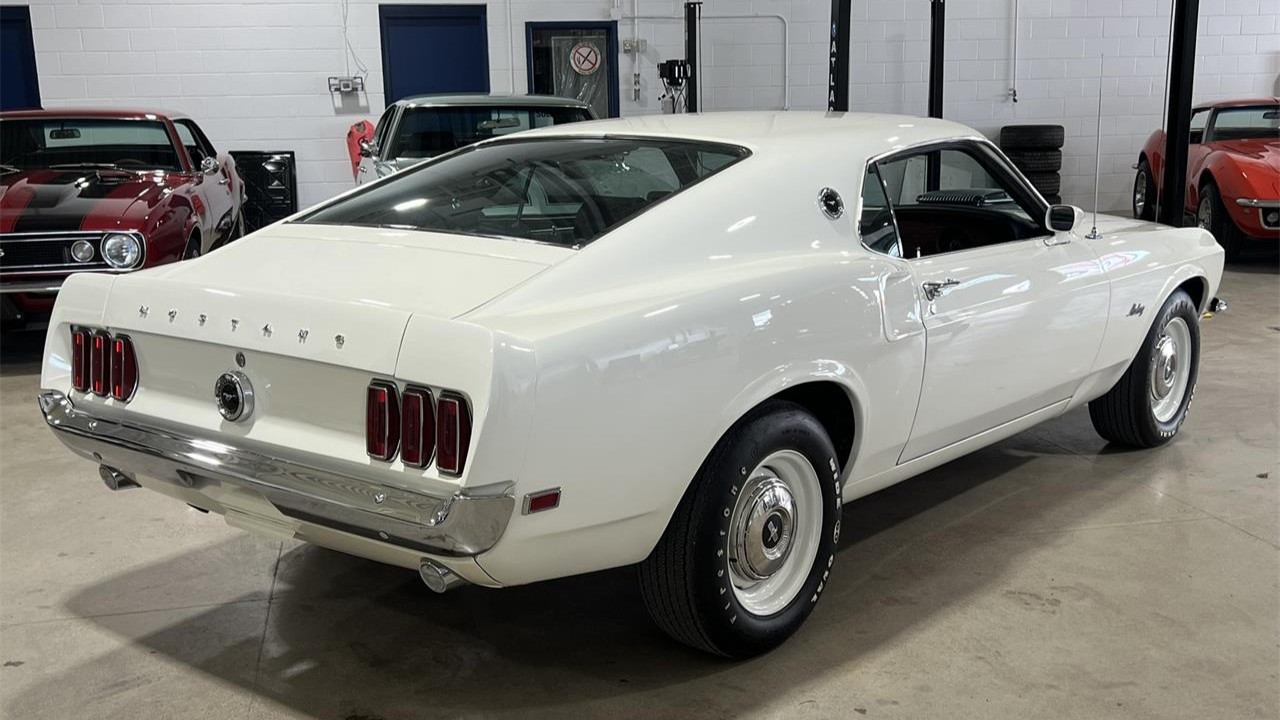
“This super-straight Mustang is a nut-and-bolt restoration and has show-quality paint and underside,” says the Canadian seller. “This Mustang was built in Dearborn so no tax, duty, or tariff to U.S. buyers.” For $88,000 USD (or $119,000 CDN), you can be the popular guy or gal not by being beautiful, but by being fast.
Click here to view this Pick of the Day on ClassicCars.com
Throughout automotive history, certain vehicles have defied conventional wisdom, often dismissed for their unconventional designs or unexpected features. These cars, initially met with skepticism, have transformed the driving experience, proving that innovation and practicality can coexist. This exploration delves into ten such vehicles that, once experienced firsthand, reveal their unique charm and functionality.
